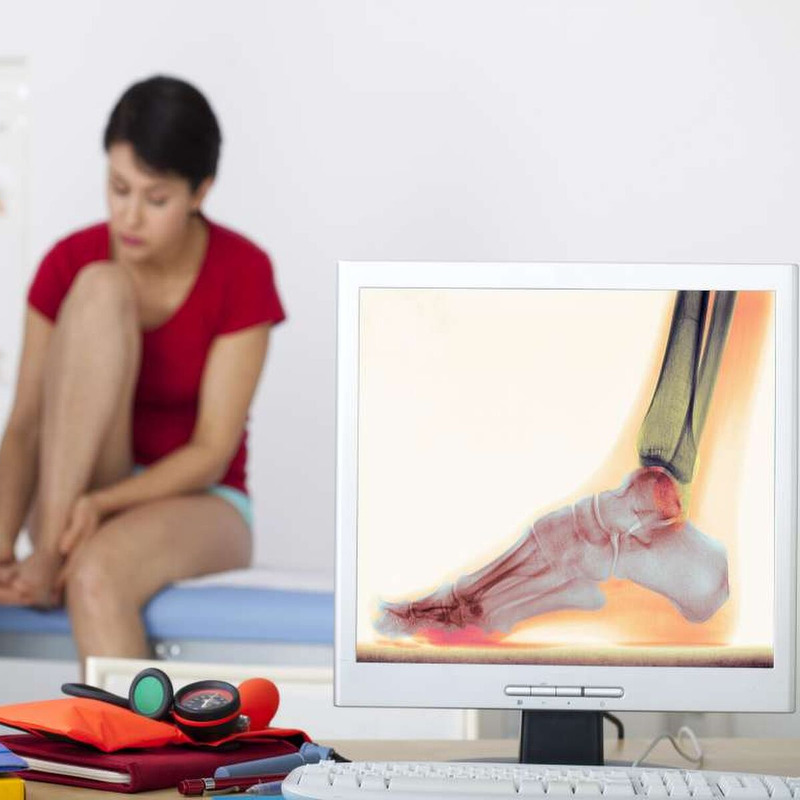Plantar Fascia Pain (Arch Pain) Get Started Today!
The plantar fascial ligament supports the arch of the foot and helps an individual walk. It is a thick, web-like ligament underneath the foot and attaches from the heel to the front of the foot.
A condition called Plantar Fasciitis is one one of the most common orthopedic complaints. During daily life, the plantar fascia ligaments undergo much wear and tear. Normally, the plantar fascia ligaments act as shock absorbers that effectively support the arch of the foot. However, when too much pressure is placed on the feet without proper arch supportive shoes, this ligament can become inflamed leading to pain.
If you reside in or near Brevard County or Melbourne, Space Coast Foot & Ankle Center specializes in dealing with plantar fascia pain. Visit Dr. MacKenney today for a full assessment.
Causes of Plantar Fasciitis
An individual is at greater risk for developing plantar fasciitis if they are overweight or obese. The reason for this is the increased weight places additional stress on the plantar fascia ligament. This is especially true for those who experience a sudden weight gain. It is also important to note that it is common for women who are pregnant to experience stints of this condition, particularly late in their pregnancy.
Those who are long-distance runners are also more likely to develop plantar fascia issues. If an individual has a very active job that requires them to be on their feet often, such as cashier, restaurant server, or factory worker, they are at an increased risk for developing this condition. Also, the highest risk for developing plantar fasciitis is with active men and women between the ages of forty and seventy.
Another risk for developing plantar fasciitis is for those with structural foot problems, like very flat feet or very high arches. Also, a very tight Achilles Tendon may result in plantar fascia pain. Still those who wear shoes with poor arch support and soft soles are at high risk for plantar fasciitis.
Symptoms of Plantar Fasciitis
Pain on the bottom of the heel is the major complaint from those who suffer from plantar fasciitis. Although, some individuals will experience pain within the arch are (instep). Plantar fasciitis develops slowly over time. While this complaint usually affects only one foot, it is not unheard of for both feet to be affected. Some individuals describe the pain they experience with plantar fasciitis as dull, while others suffer from a sharp pain. Some individuals experience a burning feeling or ache on the bottom area of the foot that extends outward from their heel.
Generally, pain that an individual experiences from plantar fasciitis is worse in the morning upon taking their first steps out of bed, or when they have been lying or sitting down for an extended period of time.
Due to increased inflammation with plantar fasciitis, pain the individual experiences can flare up after prolonged activity. Rather than experiencing the pain during the activity, it starts just after stopping.
Diagnosis of Plantar Fasciitis
If you are experiencing plantar fascia pain, you may have plantar fasciitis. If pain persists for longer than a couple of days, you may want to seriously consider visiting Dr. MacKenney of Space Coast Foot & Ankle Center located in Melbourne for a full assessment.
A physical exam will be performed to properly diagnose your foot and to be sure that the pain is not the result of a different foot issue.
It may also be necessary to perform an X-ray or an even an MRI at times if symptoms persist to ensure nothing else is causing the fascia pain, like a fractured bone. A key to diagnosis may be understanding when and where you experience this arch pain.
Treatment Options for Plantar Fasciitis
An important aspect of treatment for plantar fasciitis is reducing the inflammation in the plantar fascia ligament. This can include both home remedies and medical treatments.
Home Remedies and Treatments
Staying off your feet and applying ice for about fifteen to twenty minutes, two to three times a day is the first step in home treatment for this condition. This is to reduce the swelling associated with plantar fasciitis. Another way to reduce swelling is changing or reducing any exercise activities you participate in. Performing stretching exercises and utilizing arch supports in your shoes can also alleviate the pain.
Inflammation in the ligament can often be reduced with nonsteroidal anti-inflammatory drugs (NSAIDS), like ibuprofen (Advil or Motrin), as well as naproxen (Aleve).
Medical Treatments
If the pain is not eased with over-the-counter, anti-inflammatory drugs or other home treatments, it is vital to visit a doctor. They may apply corticosteroids to the heel or arch or inject a corticosteroid directly into the area of the ligament that is damaged.
If the plantar fascia pain continues, the doctor will recommend other treatments. This may include arch supports, or night splints. The most drastic therapy is surgery and may be necessary if all other treatments do not work.
Get Treatment In Brevard County at Space Coast Foot & Ankle Center
Space Coast Foot & Ankle Center of Melbourne and Brevard County specializes in the treatment of plantar fascia pain and plantar fasciitis. Do not suffer one more day, contact our friendly, family oriented staff today for an appointment.

